As the world becomes increasingly conscious about the environment, the demand for sustainable and eco-friendly products is on the rise. One of the latest trends in the beauty industry is the use of sea moss, a type of algae that is packed with nutrients and has numerous health benefits for the skin and body. In this article, we explore the benefits of sea moss and how it is shaping the new wave of “clean” beauty products.
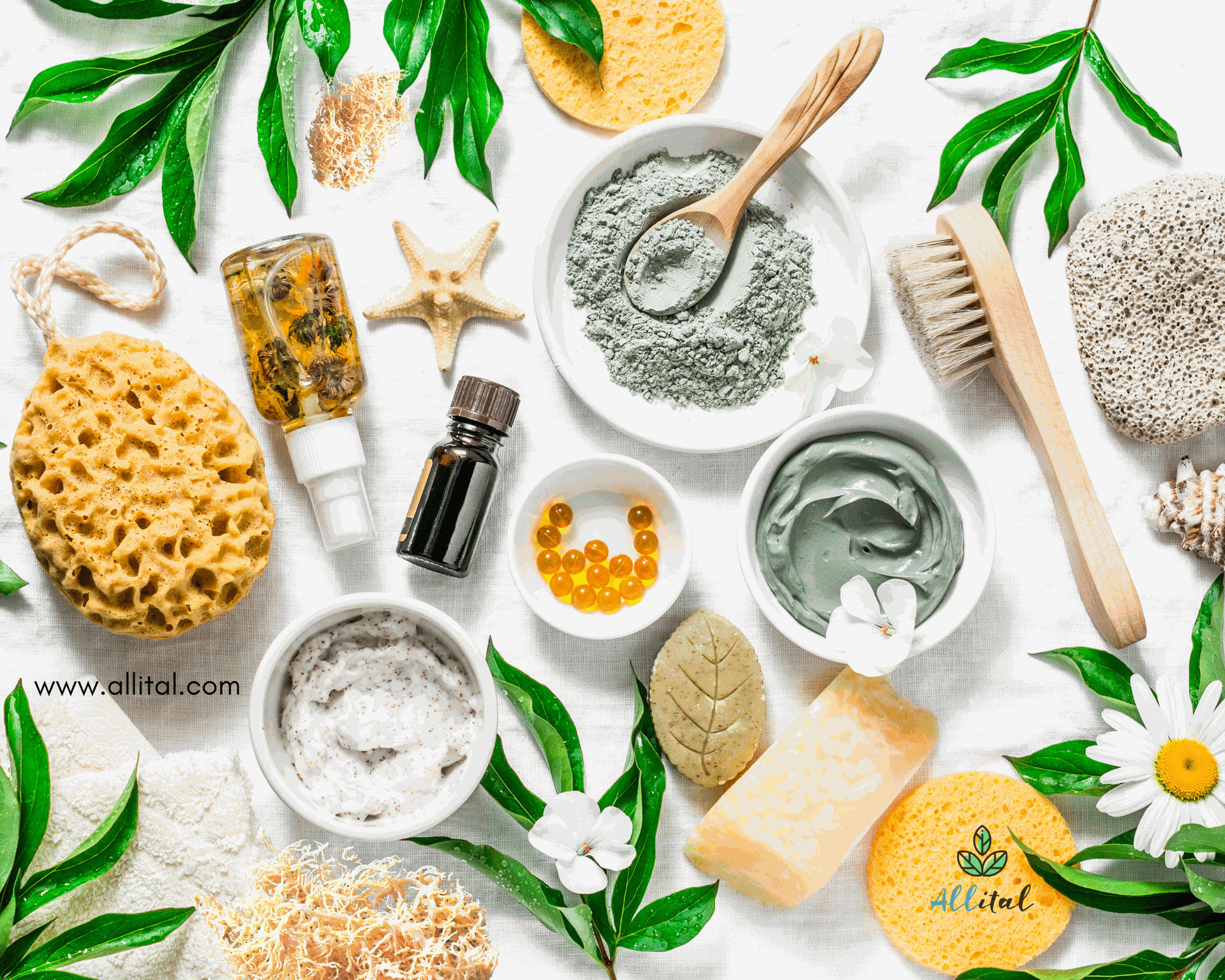
What are Clean Beauty Products?
Clean beauty refers to beauty products that are made without potentially harmful ingredients such as parabens, sulfates, phthalates, and synthetic fragrances. These ingredients are often associated with skin irritation, allergic reactions, and even long-term health effects such as cancer. Clean beauty products are formulated with natural and organic ingredients that are safer and gentler on the skin, without sacrificing performance. They are often free from synthetic dyes and fragrances, and are not tested on animals.
Clean beauty is important because it promotes transparency in the beauty industry and empowers consumers to make informed choices about the products they use on their skin. It encourages companies to be more responsible and ethical in their ingredient sourcing, production, and packaging.
By choosing clean beauty products, consumers can reduce their exposure to potentially harmful chemicals and support companies that prioritize sustainability and social responsibility. Additionally, clean beauty products are often better for sensitive skin and can improve overall skin health and appearance. Overall, clean beauty is a movement towards safer, more ethical, and more sustainable beauty products that promote both personal and environmental health.
Setbacks Facing The Beauty Industry
The beauty industry has been facing setbacks in recent years due to the growing awareness among consumers regarding the potential harm caused by the harsh chemicals and synthetic ingredients used in traditional beauty products. Many consumers are now seeking out more natural and environmentally-friendly alternatives to their traditional beauty products, leading to the rise of the "clean" beauty movement.
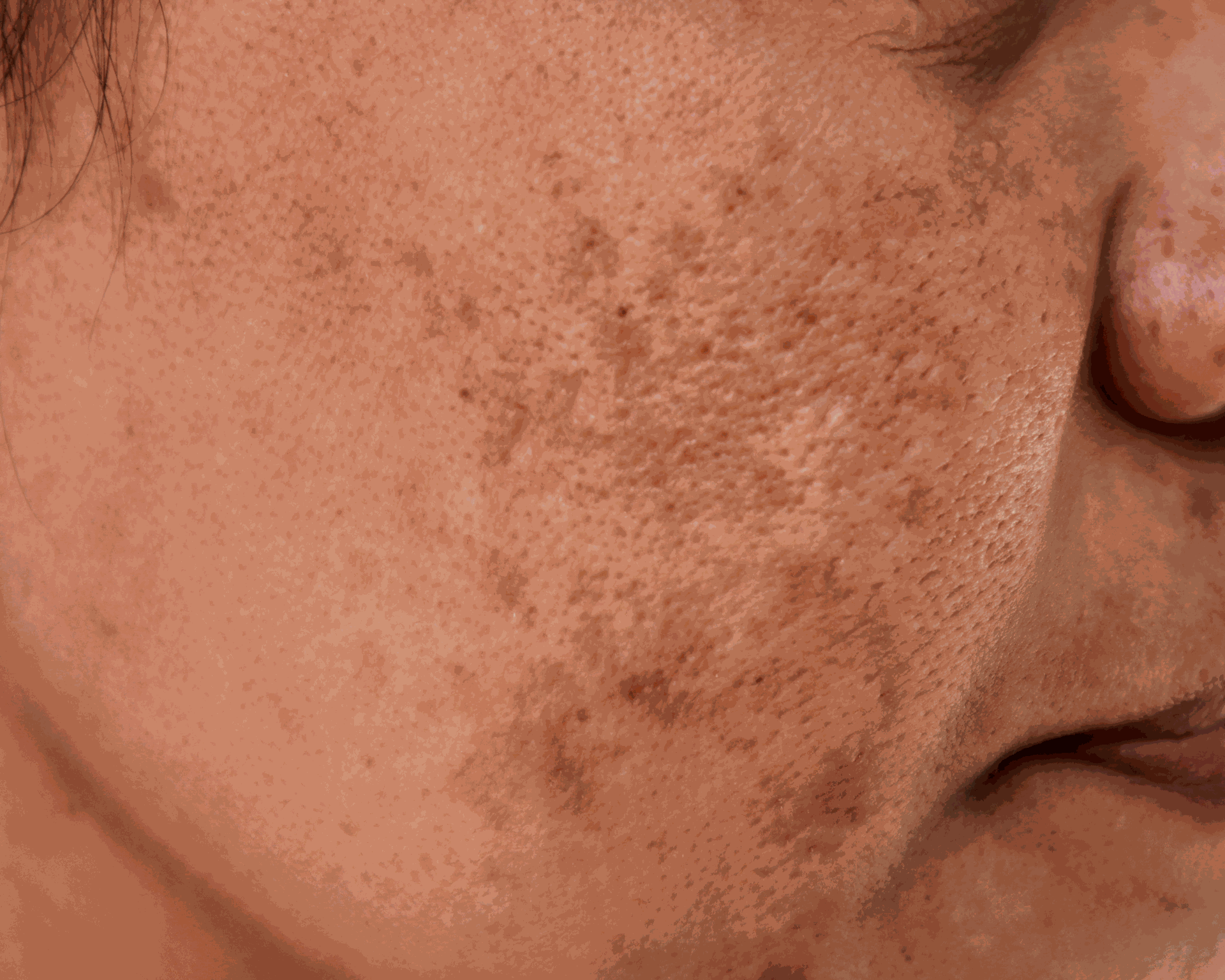
Harmful Ingredients in Traditional Beauty Products
Carcinogens are chemicals that have been linked to an increased risk of cancer. Many traditional beauty products contain ingredients such as formaldehyde, coal tar, and benzophenone, which have been identified as carcinogens.
Irritants are substances that can cause skin irritation and inflammation, leading to redness, itching, and other unpleasant symptoms. Ingredients such as fragrances, preservatives, and artificial colors are known to be common irritants in beauty products.
Endocrine disruptors are chemicals that can interfere with the body's hormonal system, leading to a range of health problems, including reproductive issues and developmental problems. Common endocrine disruptors found in beauty products include phthalates, parabens, and triclosan.
Other potentially harmful ingredients that have been identified in traditional beauty products include formaldehyde releasers, which release small amounts of formaldehyde over time, and hydroquinone, which is used in skin-lightening products and has been linked to cancer and other health issues.
The growing awareness of these harmful ingredients has led to a rise in the demand for natural and organic beauty products, which use plant-based ingredients and avoid harmful chemicals. Many companies are now offering safer and more sustainable alternatives to traditional beauty products, such as sea moss, which is a natural and effective alternative to synthetic ingredients.
What is Sea Moss?
Sea moss, also known as Irish moss, is a type of red algae that grows in the Atlantic Ocean, specifically in the Caribbean Sea and along the coasts of Ireland. It has been used for centuries in traditional medicine and is known for its numerous health benefits. Sea moss is a natural source of iodine, which is essential for healthy thyroid function. It also contains calcium, magnesium, potassium, and other minerals that are vital for overall health and a popular ingredient in many natural skin and hair care products..
How is Sea Moss Used in Beauty Products?
Sea moss has gained popularity in the beauty industry due to its many benefits for the skin. It is rich in antioxidants, which help to protect the skin from damage caused by free radicals. Sea moss also contains collagen, which is essential for maintaining healthy skin elasticity and reducing the appearance of wrinkles.
Many beauty brands are now incorporating seaweeds such as sea moss and bladderwrack into their products, including facial cleansers, moisturizers, and masks. Sea moss is also used in hair care products, as it helps to strengthen hair and prevent breakage.
Benefits of Using Sea Moss in Beauty Products:
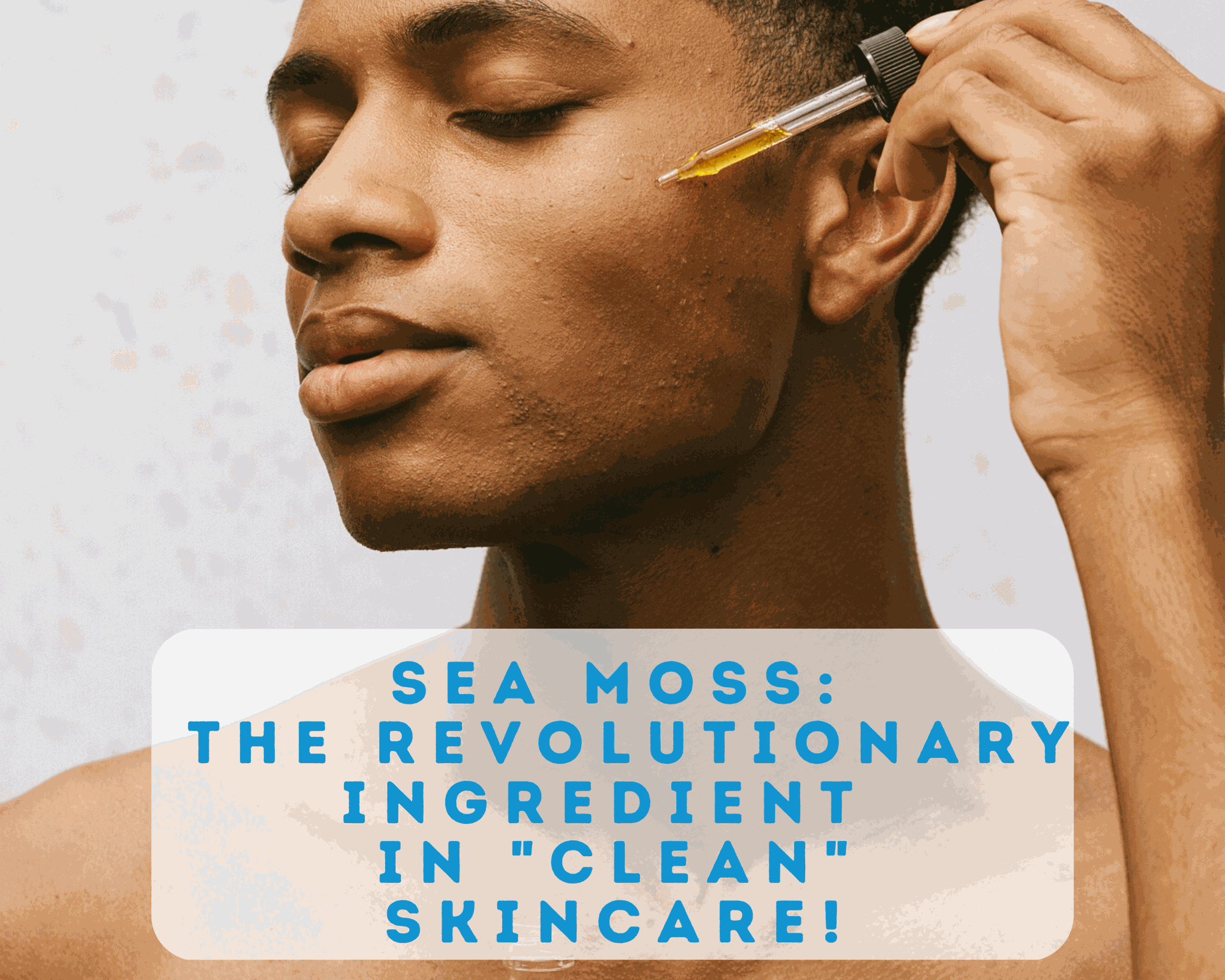
Hydrates Skin: Sea moss is rich in amino acids and essential fatty acids, which help to hydrate and moisturize the skin. It is an excellent ingredient for those with dry or dehydrated skin.
Anti-Aging: Sea moss contains collagen, which is essential for maintaining healthy skin elasticity and reducing the appearance of wrinkles. It also has antioxidants, which protect the skin from damage caused by free radicals.
Anti-Inflammatory: Sea moss has anti-inflammatory properties that help to reduce redness and inflammation in the skin. It is an excellent ingredient for those with sensitive or irritated skin.
Nourishes Hair: Sea moss is rich in vitamins and minerals that help to strengthen hair and prevent breakage. It is an excellent ingredient for those with dry or damaged hair.
Boosts Immunity: Sea moss is a natural source of iodine, which is essential for healthy thyroid function. It also contains other minerals and vitamins that help to boost the immune system and improve overall health.
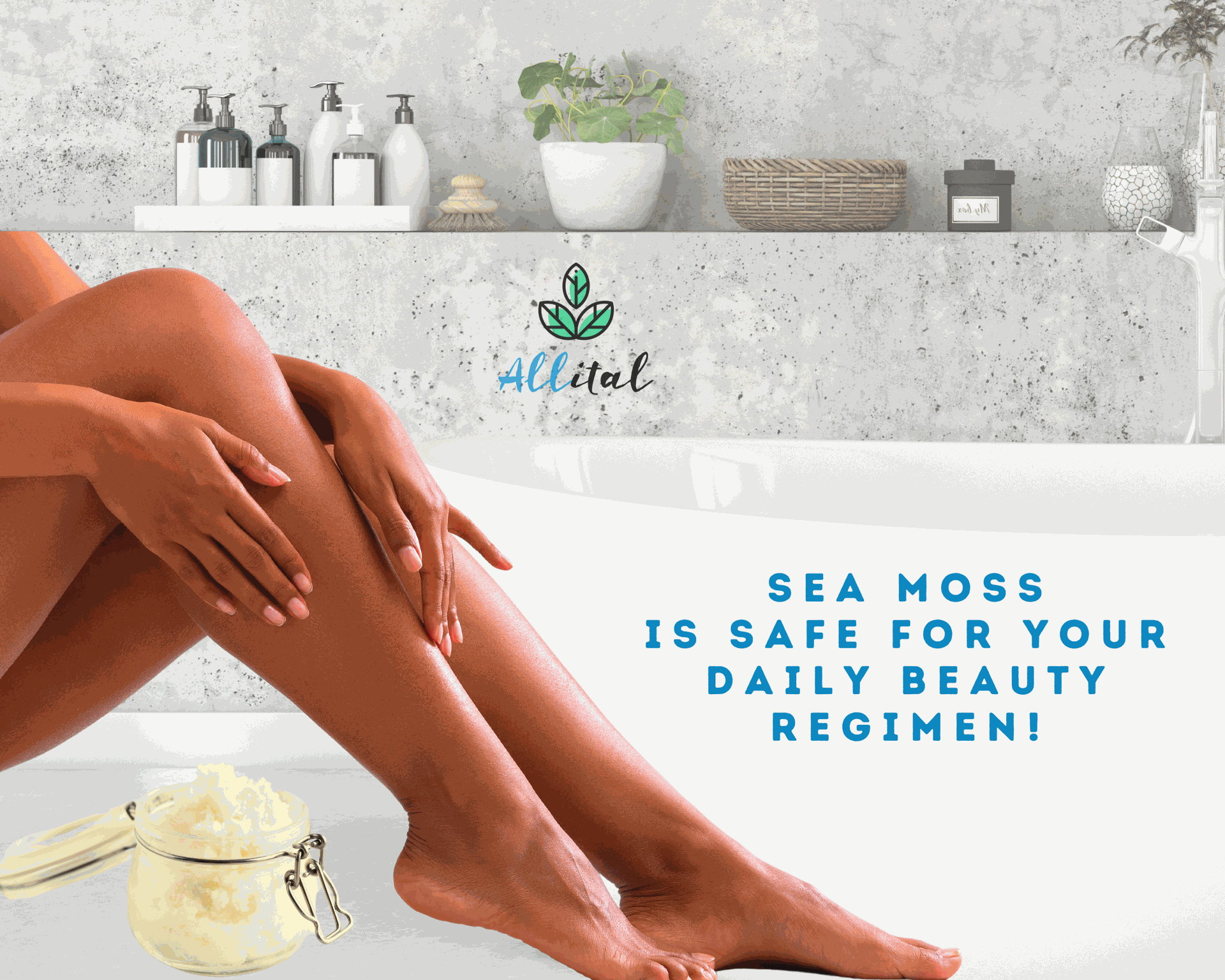
Natural and sustainable: Sea moss is a natural and sustainable ingredient that is harvested from the ocean. Unlike synthetic ingredients found in many traditional beauty products, sea moss is biodegradable and has a lower environmental impact.
Non-toxic: Sea moss is a non-toxic ingredient that is gentle on the skin. It doesn't contain harmful chemicals or irritants, making it suitable for those with sensitive skin.
Rich in nutrients: Sea moss is rich in nutrients such as vitamins A, C, E, and K, as well as minerals like iodine, calcium, and magnesium. These nutrients help to nourish and hydrate the skin, leaving it looking healthy and glowing.
Anti-inflammatory and anti-bacterial: Sea moss has anti-inflammatory and anti-bacterial properties that can help to soothe and calm the skin. It can also help to reduce redness and inflammation caused by acne and other skin conditions.
Versatile: Sea moss can be used in a variety of beauty products, from facial masks to body scrubs and even hair products. Its versatility makes it a valuable ingredient for formulators looking to create "cleaner" beauty products.
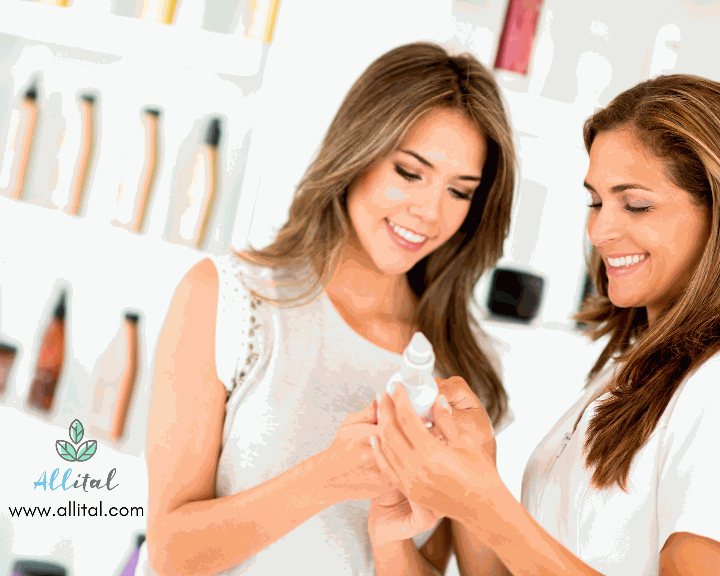
Tips to Adopt a More Natural Beauty Routine
If you're looking to adopt a more natural beauty routine, here are some tips to help you get started:
Read the ingredient labels: Take a closer look at the ingredient labels on your beauty products and avoid products that contain harsh chemicals, synthetic fragrances, and other harmful ingredients such as parabens, sulfates, and phthalates. Look for products that are made with natural and organic ingredients.
Make your own products: Consider making your own beauty products using natural ingredients such as coconut oil, shea butter, and essential oils. This can be a fun and affordable way to create customized products that are tailored to your specific needs. Enjoy a few sea moss homemade beauty recipes below.
Use multi-purpose products: Look for products that can serve multiple purposes, such as a cleanser that also works as a makeup remover, or a moisturizer that also contains SPF protection. This can help to simplify your beauty routine and reduce the number of products you need to buy. Sea moss gel can be used as a mild facial cleanser, make-up remover and face-mask in one.
By adopting these tips, you can make a positive impact on your health and the environment by choosing natural beauty products.
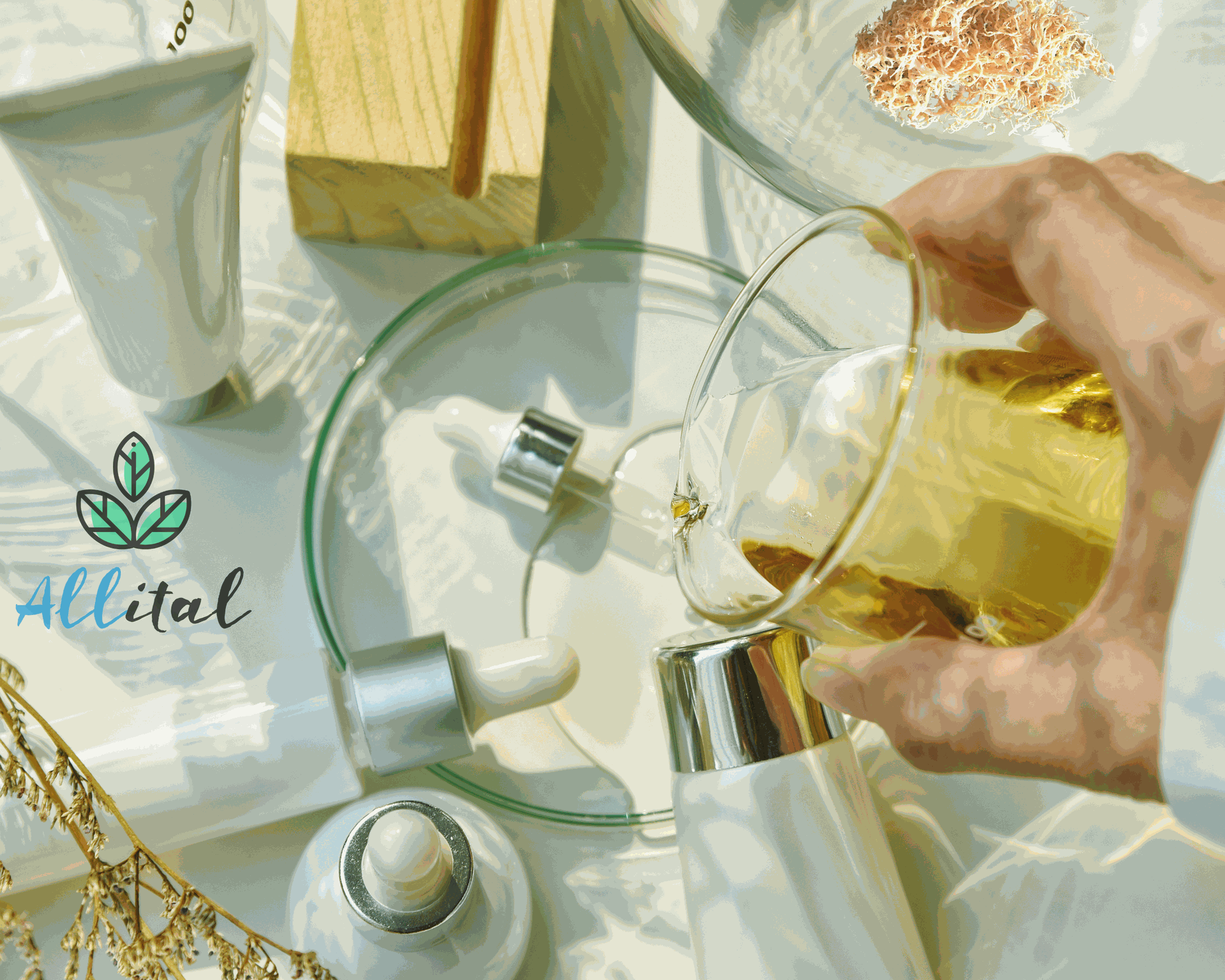
How to Incorporate Sea Moss into Your Beauty Routine
If you want to incorporate sea moss into your beauty routine, there are many products available on the market that contain this ingredient. Look for facial cleansers, moisturizers, and masks that contain sea moss. You can also use sea moss gel as a face mask or add it to your shampoo for healthier hair.
Another way to incorporate sea moss into your beauty routine is by adding it to your diet to work from inside out. Sea moss gel is an easy and convenient way to do so. Just simply add it to your smoothies or juices because it has a mild taste and can be easily blended into your favorite beverages for a nutrient boost.
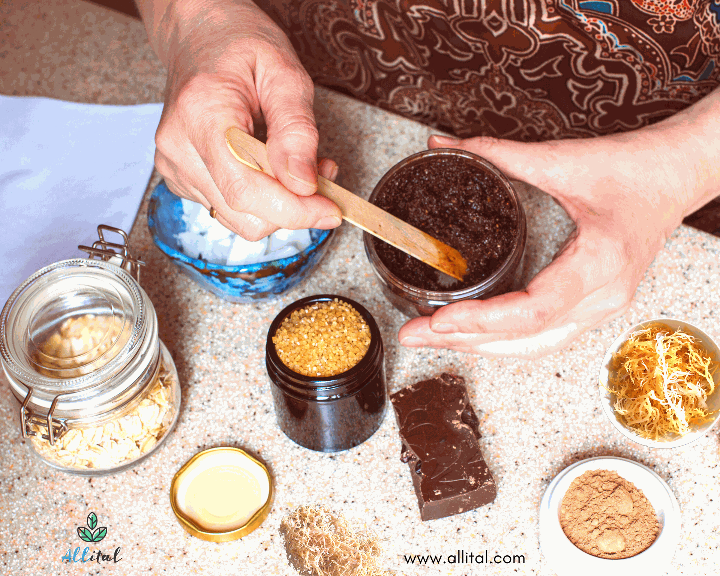
Homemade Sea Moss Skincare Recipes
Sea moss is a versatile ingredient that can be used in a variety of homemade skincare recipes. Here are four simple DIY sea moss skincare recipes for a cleanser, moisturizer, toner, and body scrub :
Sea Moss Cleanser:
1/4 cup of raw sea moss gel
1 tablespoon of organic coconut oil
1 tablespoon of raw honey
Mix all ingredients in a blender until smooth. Apply the mixture to your face and gently massage in circular motions. Rinse with warm water and pat your face dry.
Sea Moss Moisturizer:
1/4 cup of raw sea moss gel
1 tablespoon of jojoba oil
1 tablespoon of shea butter
5-7 drops of essential oil of your choice (optional)
Melt the shea butter in a double boiler and mix in the sea moss gel and jojoba oil. Stir until well combined, then remove from heat and add the essential oil if desired. Transfer the mixture to a clean jar and store in a cool, dry place. Apply to your face and body as needed for nourished and hydrated skin.
Sea Moss Toner:
1/4 cup of raw sea moss gel
1/2 cup of distilled water
1 teaspoon of witch hazel
5-7 drops of essential oil of your choice (optional)
Blend the sea moss gel and distilled water until smooth. Strain the mixture through a fine mesh sieve or cheesecloth to remove any remaining solids. Mix in the witch hazel and essential oil if desired. Transfer the mixture to a clean spray bottle and mist your face after cleansing for a refreshing and hydrating toner.
Sea Moss Body Scrub:
1/4 cup of raw sea moss gel
1/2 cup of organic sugar
1/4 cup of organic coconut oil
5-7 drops of essential oil of your choice (optional)
Mix all ingredients in a bowl until well combined. Apply the mixture to your body in the shower, massaging in circular motions to exfoliate and soften the skin. Rinse off with warm water and pat your skin dry.
These simple sea moss skincare recipes are a great way to incorporate this nutrient-rich ingredient into your daily beauty routine. They are easy to make and can be customized to suit your skin's specific needs. Enjoy the benefits of natural and clean skincare with sea moss!
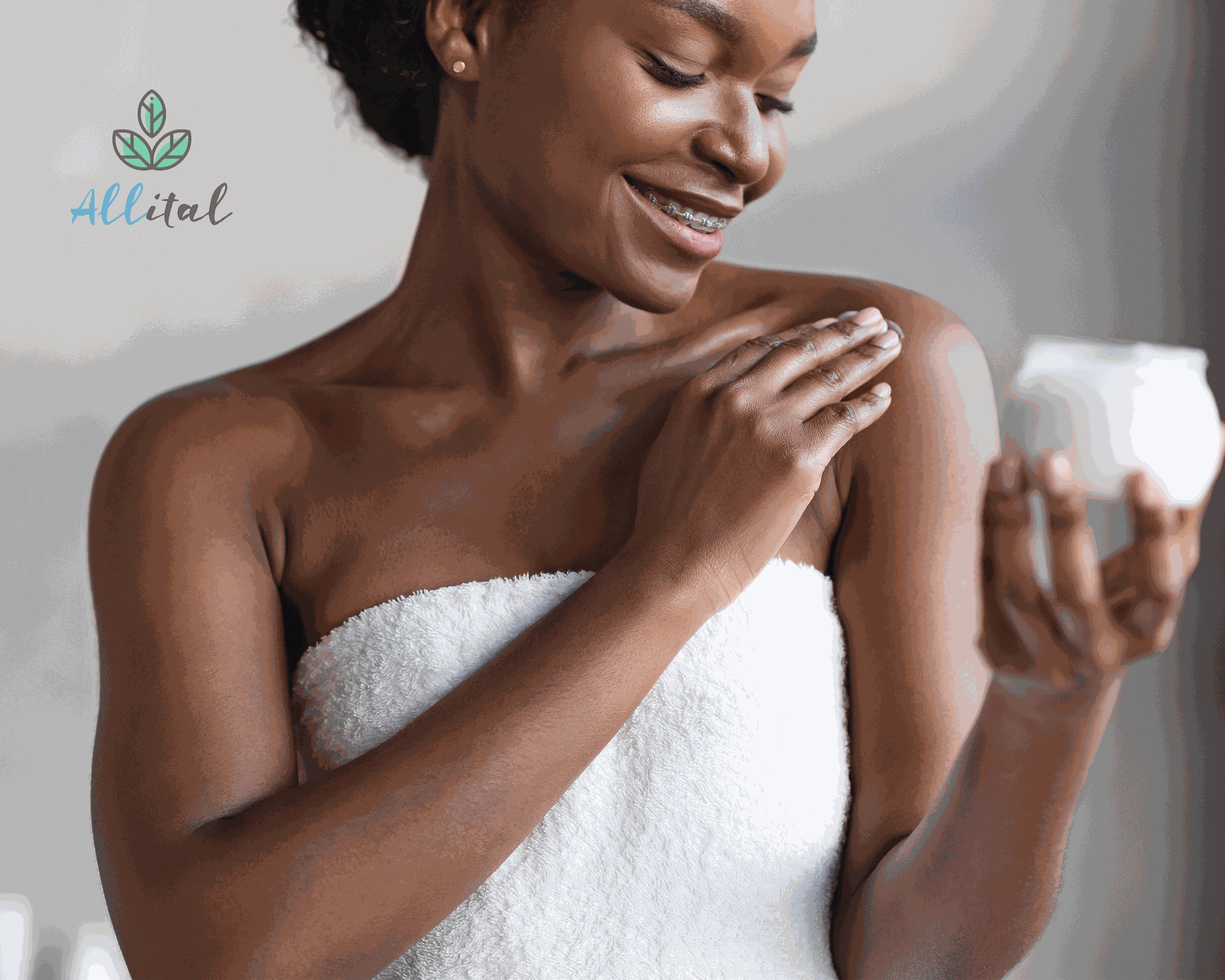
Final Thoughts
In conclusion, sea moss has the potential to have a significant impact on the beauty industry due to its numerous benefits for the skin and hair. Its hydrating and anti-inflammatory properties make it a popular ingredient in products designed for sensitive or acne-prone skin, while its ability to strengthen hair follicles and promote healthy hair growth makes it a beneficial ingredient in hair care products.
As consumers continue to prioritize natural and organic alternatives, the demand for sea moss and other plant-based ingredients is likely to continue to grow, leading to "cleaner" beauty products free from harmful ingredients found in traditional beauty products such as carcinogens, irritants, endocrine disruptors, and other potentially harmful substances. Hence, incorporating sea moss into your beauty routine can help to not only elevate your skincare routine but also contribute to a cleaner more sustainable beauty industry.
Get more amazing DIY Sea Moss Skincare recipes on this BLOG.
References:
Ju, Q., & Zouboulis, C. C. (2016). Endocrine-disrupting chemicals and skin manifestations. Reviews in Endocrine and Metabolic Disorders, 17(3), 449-457. doi: 10.1007/s11154-016-9371-2. https://pubmed.ncbi.nlm.nih.gov/27363826/
Endocrine Disruptors. National Institute of Environmental Health Sciences. Accessed 26/03/23. https://www.niehs.nih.gov/health/topics/agents/endocrine/index.cfm
Jacob, S. L., Cornell, E., Kwa, M., Funk, W. E., & Xu, S. (2018). Cosmetics and Cancer: Adverse Event Reports Submitted to the Food and Drug Administration. JNCI Cancer Spectrum, 2(3), pky012. doi: 10.1093/jncics/pky012. https://www.ncbi.nlm.nih.gov/pmc/articles/PMC6649728/
Neagu, M., Caruntu, C., Constantin, C., Boda, D., Zurac, S., Spandidos, D. A., & Tsatsakis, A. M. (2016). Chemically induced skin carcinogenesis: Updates in experimental models (Review). Oncology Reports, 35(5), 2516-2528. doi: 10.3892/or.2016.4683. https://www.ncbi.nlm.nih.gov/pmc/articles/PMC4811393/
Malinauskienė, L., Blažienė, A., Chomiciene, A., & Isaksson, M. (2015). Formaldehyde may be found in cosmetic products even when unlabelled. Open Medicine, 10(1), 312-315. doi: 10.1515/med-2015-0047. PMID: 28352713; PMCID: PMC5152996. https://www.ncbi.nlm.nih.gov/pmc/articles/PMC5152996/
De Groot, A. C., White, I. R., Flyvholm, M. A., & Lensen, G. (2010). Formaldehyde-releasers in cosmetics: Relationship to formaldehyde contact allergy: Part 1. Characterization, frequency and relevance of sensitization, and frequency of use in cosmetics. Contact Dermatitis, 62(1), 2-17. doi: 10.1111/j.1600-0536.2009.01615.x. https://bit.ly/40AIuF9Hydroquinone. National Library of Medicine. Accessed 26/03/23. https://www.ncbi.nlm.nih.gov/books/NBK539693/
Kim, S.-K., Pangestuti, R., & Hong, Y.-K. (2018). Beneficial effects of marine algae-derived carbohydrates for skin health. Marine drugs, 16(11), 459. https://doi.org/10.3390/md16110459
Valentina Jesumani et al., “Potential Use of Seaweed Bioactive Compounds in Skincare-A Review,” Marine drugs (2019), https://www.ncbi.nlm.nih.gov/pmc/articles/PMC6950024/.
Adriana P. Januário et al., “Red Seaweed-Derived Compounds as a Potential New Approach for Acne Vulgaris Care” (2021) https://pubmed.ncbi.nlm.nih.gov/34834345/
Pangestuti, R., Shin, K.-H., & Kim, S.-K. (2021). Anti-Photoaging and Potential Skin Health Benefits of Seaweeds. Marine drugs, 19(3), 172. https://doi.org/10.3390/md19030172
Craigie, J., & Cornish, M. L. (2019). Commercialization of Irish moss aquaculture: The Canadian experience. Botanica Marina, 62(5), 441-452. doi: 10.1515/bot-2019-0017. https://bit.ly/3FKm4t2
Lomartire, S., Marques, J.C., & Gonçalves, A.M.M. (2021). An overview of the health benefits of seaweed consumption. Marine Drugs, 19(6), 341 https://www.mdpi.com/1660-3397/19/6/341
Tsai, Y. T., Chang, C. C., & Hsieh, C. Y. (2018). Seaweed extracts as a natural conditioner for hair and skin. Cosmetics, 5(4), 60. https://doi.org/10.3390/cosmetics5040060
FDA DISCLAIMER:
The statements made within this website have not been evaluated by the Food and Drug Administration. These statements and the products of this company are not intended to diagnose, treat, cure or prevent any disease.
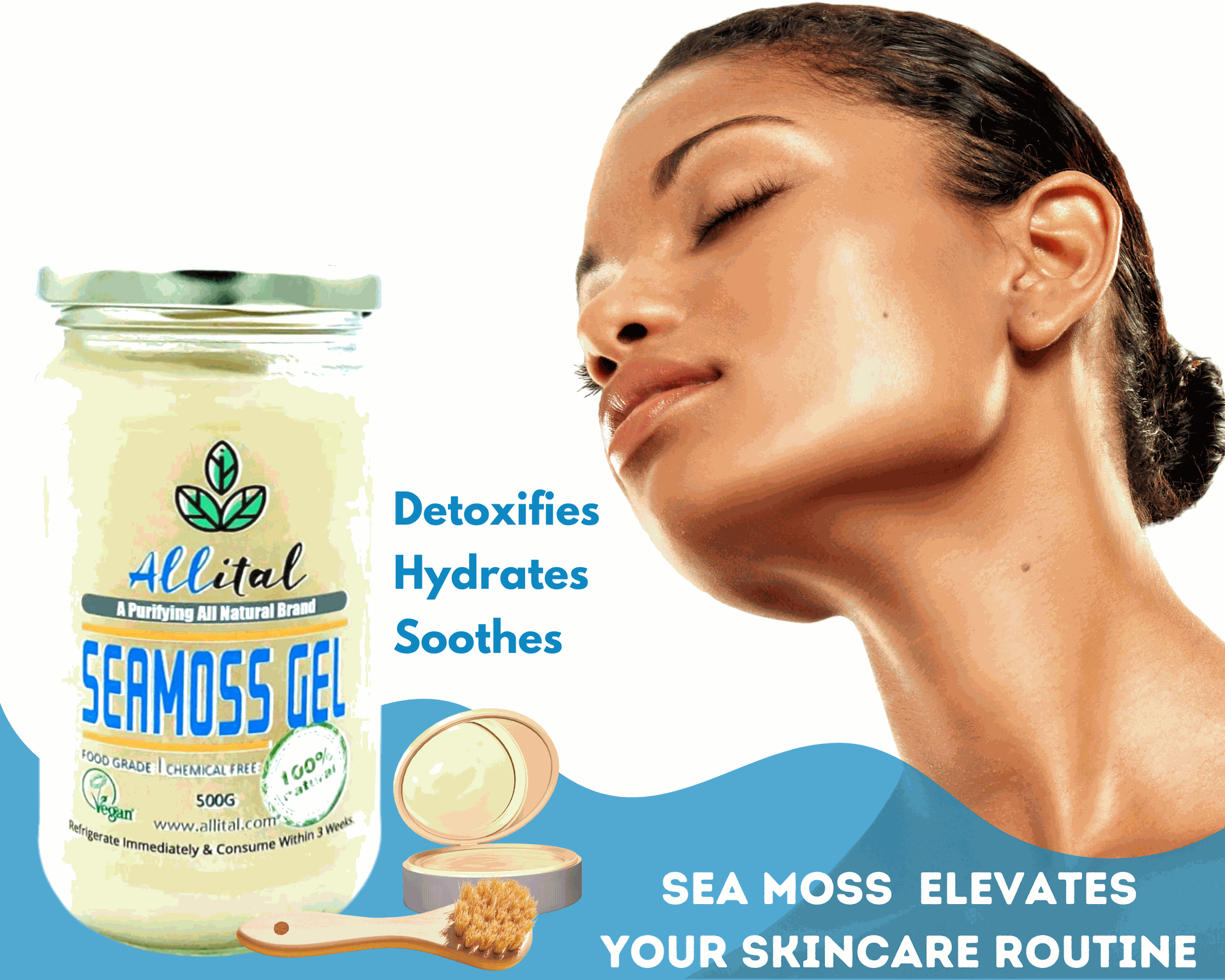
Sea Moss: The Future of “Cleaner” Beauty Products